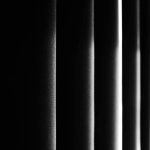Using colors in Feng Shui can boost your productivity by enhancing energy flow in your workspace. Opt for energizing hues like yellow or orange to ignite creativity and enthusiasm. Pair these with calming shades like soft blue or gentle green to maintain balance and reduce stress. A mix of bold accents and neutral tones can create a harmonious atmosphere. Experiment with colors that resonate with you, and you'll discover how your environment can significantly impact your productivity. There's so much more to explore!
Table of Contents
Key Takeaways
- Choose energizing colors like yellow and orange to boost creativity and enthusiasm in your workspace.
- Incorporate calming hues such as soft blues and gentle greens to reduce stress and enhance focus.
- Balance warm and cool tones to create a harmonious environment that promotes both energy and calmness.
- Limit bold colors to accents, using neutrals for grounding and stability in your workspace.
- Pay attention to natural light's effect on colors, as it influences mood and productivity levels.
The Basics of Feng Shui and Color Psychology
When you understand the basics of Feng Shui and color psychology, you can create an environment that boosts your productivity.
Feng Shui emphasizes balance and harmony in your space, guiding you to arrange furniture and decor to promote positive energy flow. Incorporating color psychology adds another layer, as colors evoke specific emotions and reactions.
For instance, warm colors like red and orange can energize you, while cool colors like blue and green can create a calming atmosphere. By thoughtfully selecting colors that align with your goals, you can enhance focus and creativity.
Remember to assess your surroundings, ensuring they reflect both your personal style and your productivity needs. This intentional approach transforms your space into a supportive environment for success.
Energizing Colors for Increased Focus
To boost your focus, incorporating energizing colors into your workspace can make a significant difference.
Bright and vivid hues stimulate your mind, helping you stay alert and engaged. Here are some colors to consider:
- Yellow: Promotes creativity and optimism.
- Orange: Encourages enthusiasm and boosts energy levels.
- Green: Balances and refreshes, helping with clarity.
- Red: Increases energy and passion, perfect for high-stakes tasks.
- Bright Blue: Enhances productivity and calmness simultaneously.
Calming Hues to Reduce Stress
Incorporating calming hues into your workspace can significantly lower stress levels and create a more serene environment. Soft blues, gentle greens, and warm neutrals can help you feel relaxed and focused. These colors promote tranquility, allowing you to manage stress effectively.
Here's a quick reference table to guide your color choices:
| Color | Effect |
|---|---|
| Soft Blue | Promotes calmness |
| Gentle Green | Encourages balance |
| Warm Neutral | Creates a cozy atmosphere |
Balancing Colors for a Harmonious Workspace
While selecting colors for your workspace, balancing them is crucial for creating a harmonious environment that boosts productivity.
You'll want to ensure that the colors you choose complement each other, avoiding overwhelming contrasts that can lead to distraction. Here are some tips to help you achieve that balance:
- Combine warm and cool tones: Use a mix of both to create energy and calm.
- Limit bold colors: Use them as accents rather than the main palette.
- Incorporate neutrals: These provide a grounding effect and allow brighter colors to pop.
- Consider the lighting: Natural and artificial light can change how colors appear.
- Pay attention to your mood: Choose colors that resonate with how you want to feel while working.
Practical Tips for Implementing Color in Your Environment
Creating a balanced color palette in your workspace sets the stage for productivity, but knowing how to implement those colors effectively is where the real magic happens.
Start by choosing a primary color that resonates with your work style—blue for focus, green for calm, or yellow for energy. Use this color on walls or larger decor items.
Next, incorporate accent colors through accessories like cushions, artwork, or desk organizers to energize the space without overwhelming it. Pay attention to natural light, as it can alter how colors appear.
Finally, don't forget about personal touches that inspire you—photos or mementos in your chosen colors can boost motivation and creativity.
With thoughtful implementation, your workspace will enhance your productivity.
Frequently Asked Questions
How Do I Choose Colors Based on My Personal Energy?
To choose colors based on your personal energy, first assess your emotions and mood. Consider what energizes or calms you, then select shades that resonate with your feelings, enhancing your environment and overall well-being.
Can Colors Affect Team Dynamics in a Shared Workspace?
Yes, colors can significantly influence team dynamics in a shared workspace. You'll notice that certain hues can boost mood, enhance communication, and foster collaboration, creating a more productive and harmonious environment for everyone involved.
Are There Specific Colors for Different Types of Work?
Yes, specific colors can enhance different types of work. For instance, blue boosts focus, green promotes creativity, and yellow sparks innovation. By choosing the right colors, you can create an environment that supports your work effectively.
How Often Should I Change Colors in My Workspace?
You should change colors in your workspace whenever you feel stagnant or uninspired. Refreshing your environment every few months keeps your energy vibrant and can enhance your focus and creativity, so don't hesitate to experiment!
What Colors Are Best for Virtual Work Environments?
For virtual work environments, you'll want to use calming colors like soft blues and greens to promote focus. Additionally, pops of yellow can boost creativity, while neutral tones keep the space balanced and professional.




